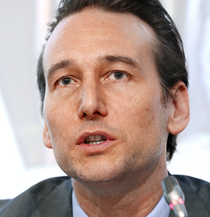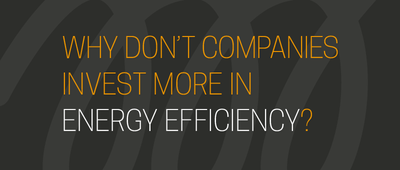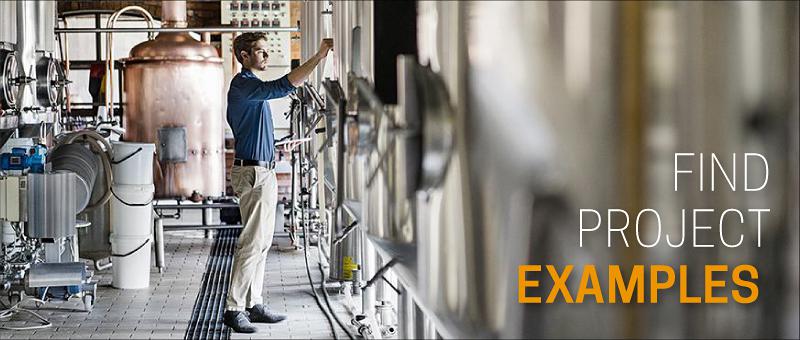Columnists: Peter Sweatman, Climate Strategy & Partners

Published on: 11 Jan 2019
Improving delivery and distribution systems for efficiency investment
For energy efficiency to deliver its 44% share of the greenhouse gas reductions required to deliver the Paris Agreement, global investment rates need to double from now to 2025, and then double again from 2025 to 2040 (to US$ 1.3 trillion). These investments on average repay three times over their asset-lives in energy savings alone, not counting any multiple benefits, according to the International Energy Agency (IEA).
Yet in 2017, energy efficiency investments rose just 3% to US$ 236 billion. This figure remains 20% less than global fossil-fuel consumption subsidies of US$ 300 billion in 2017, also according to IEA estimates.
We can only scale up energy efficiency investment if its delivery and distribution systems are as competitive, easy to understand and as risk free to execute as they are for other things that compete for our limited decision-making bandwidth. To invest US$ 236 billion in energy efficient buildings, businesses and vehicles requires tens if not hundreds of millions of unique decisions. This compares to tens of thousands of decisions to invest US$ 298 billion in renewables, or just hundreds to deploy fossil-fuel subsidies.
So how do we double energy efficiency investment rates, and then double them again in 2025?
Firstly, energy efficiency has to be a standard - not an optional extra requiring an extra decision. It is a seat belt, and not a GPS system. This requires mandatory policies working in the interests of public safety and adhering to the precautionary principle.
As we have seen across multiple industries, when a component becomes a standard, it enters the mainstream and its cost is reduced dramatically through economies of scale, and markets and supply chains adjust accordingly. As a standard component in the taxonomy of financial products, energy efficiency will no longer struggle to attract financing: instead, mainstream financiers will proactively seek it out.
Secondly, energy performance must be visible: many financiers don’t know (or care?) about the relative energy performance of their assets or their clients’ assets. However, evidence is emerging that energy performance and financial performance are positively correlated. Investors that hold energy-efficient collateral will not only have an easier time at sale, but also have clients that are marginally less likely to default. The energy performance of existing, funded assets can also be seen as a proxy for those assets’ resilience in a carbon neutral economy, as inefficient assets have an invisible upgrade cashflow requirement sometime between now and 2050.
Thirdly, we must radically improve the delivery and distribution system for energy efficiency investments. There is a reason why retail brands command “trust”. Apple phones work, Amazon delivers, utilities supply electricity and banks make the mortgage process as painless as they can.
Energy efficient homes, offices, industries and vehicles must be preferred by financiers. When energy efficiency becomes a standard component of a mortgage, commercial loan or car finance contract, it ensures consumer visibility and brings the energy dimension into the retail domain. To make hundreds of millions of easy decisions, energy efficiency needs to be productised - by choice and through prudential regulation - by entities dealing with hundreds of millions of clients.
In recent years, substantial progress has been made in these areas. Founded in 2013, the Energy Efficiency Financial Institutions Group (EEFIG) – co-convened by EU Commission and UNEP FI - has brought together over 120 policymakers, entities which deliver finance and sector stakeholders to upscale energy efficiency finance in Europe. EEFIG has published findings, launched Europe’s largest energy efficiency project database, developed tools in five languages, helped think through accounting rules, supported energy efficient mortgages, engaged with stakeholders across many EU countries in conferences such as the Sustainable Energy Investment Forums, and developed standardised processes for financial institutions and ESCOs.
Building on this, the High-Level Expert Group on Sustainable Finance in a key part of its 2018 work called for more visibility of energy efficiency investments data and also recommended that the Commission further examine how energy efficiency impacts asset values and how energy savings impact clients’ ability to pay.
Entering its third phase, in 2019, EEFIG will be recruiting for more financial institutions to work together to explore how energy efficiency intersects with green finance. We hope to uncover the patterns and correlations between energy and financial performance and improve and develop more insights and tools to help address the €130 billion annual energy efficiency investment gap in Europe.
Furthermore, I hope that EEFIG members can help to deliver the business models and financial products which will define millions of smart buildings and transform today’s built environment, manufacturing and transport infrastructure into the one that is fit for a “well-below 2 degree compliant” world. Accelerating sustainable energy investment, along with finance for climate change action and mitigation, will enable us to share the invaluable benefits of a net-zero emissions Europe in 2050.
Follow Peter Sweatman and Climate Strategy on twitter @ClimateSt







